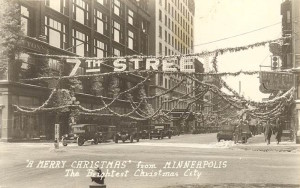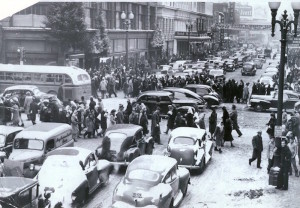Later this month The Conspiracy Game, the fourth book in the Justinia Wright, PI series, will be published. And to prepare for the book’s release, I am devoting this month’s blog posts to the city of Minneapolis, where Justinia Wright works and plays.
This week we’ll cover a bit of history and some interesting facts about Minneapolis, the bigger half of the Twin Cities.
In 1819, the US army established Ft Snelling where the Minnesota River joins the Mississippi River. The US federal government wanted to make sure the United States was represented in an area claimed by the British and the French, not to mention the native American tribes actually living there.
The next three decades saw various treaties secure the area for the US and a flood of settlers from the east moved in. On the east side of the Mississippi, at St Anthony Falls, in 1849, a townsite was established and the town called St Anthony.
In 1854, on the west side of the falls, another townsite was platted. Suggested names for this town were Albion, All Saints, Lowell, Brooklyn, Addiseville, and Winona — all were rejected. The town’s first schoolmaster, Charles Hoag, is said to have come up with the name Minnehapolis, which he took from Minnehaha, mni (the Dakota word for water), and polis (the Greek word for city). Hoag noted the “h” in Minnehapolis was silent. The townsfolk voted and accepted Hoag’s name, minus the silent “h”.
The territorial legislature, in 1856, officially recognized Minneapolis as a town and in 1867 the town was incorporated as a city.
The first industry, making use of St Anthony Falls to generate power, was lumber and from 1848 to 1887, Minneapolis was the lumber capitol of the US. But it wasn’t lumber that put the city on the world’s radar, it was flour milling. From 1880 to 1930, Minneapolis was the leading mill city in the US and in 1884 passed Budapest as the world’s leading flour miller — which gave Minneapolis the nickname “Mill City”.
Today, the sawmills and flour mills are long gone and the economy has diversified. For a time, Minneapolis was a banking center and an important rail hub. Finance and rail, along with trucking, are still important parts of the city’s economic portfolio, to which have been added industry, healthcare, computers, and high tech. Five Fortune 500 companies call Minneapolis home.
The Minneapple, as the city is sometimes called, is a diverse city. Certainly not on the order of, say, the Big Apple, but diverse nonetheless. In the span of a mere 60 years the city has gone from 98 1/2% German and Scandinavian heritage to over 1/3 of the population being being comprised of a variety of ethnicities. Minneapolis has, for example, the largest Somali community in North America and has hundreds of Somali owned businesses. There are large Asian, Hispanic, and African-American communities as well. The first Muslim elected to the US Congress was African-American lawyer Keith Ellison, representing Minnesota’s 5th Congressional District.
The cultural scene in Minneapolis is alive and well with many artists calling the city home. There are numerous art museums and galleries, theaters and performing groups, orchestras, and musicians in the city. Minneapolis is ranked the third most literate city in the US.
In But Jesus Never Wept (Justinia Wright, PI #3), Tina’s brother, Harry, asks her why she moved from San Francisco to Minneapolis.
Tina put down her book. “What’s wrong with Minneapolis?”
“Too damn cold here.”
“It does get cold. It also gets hot and muggy in the summer and all the lakes are breeding grounds for a zillion mosquitoes. I didn’t come here because of the weather. Every place has its problems. I came here because it is the Midwest and we grew up in the Midwest. I came here because I liked the multi-cultural nature of what is in essence a small city. I have what I grew up with and I have something of what I liked about San Francisco. Minneapolis and St Paul have a little bit of everything. And I like that. They are conservative and liberal all at the same time.”
Minneapolis and her twin, St Paul, do indeed have a little bit of everything. And in the coming weeks we’ll explore more of what makes the City of Lakes a wonderful place to call home.
Share This!






